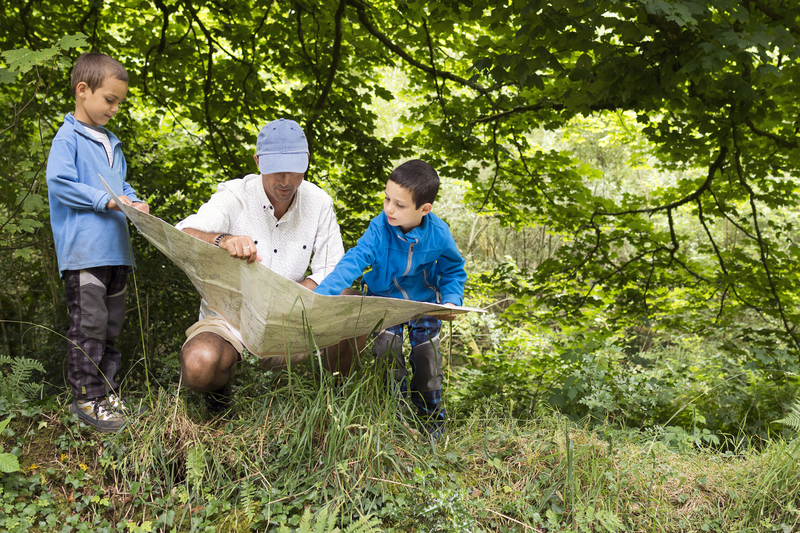In a survival situation, kids are not much different than adults – the more they know how to respond, the better off they will be.
Here are some basic survival skills you should make sure you kids know as early as possible.
S.T.O.P acronym.
What if you and your child become separated? Would they instantly panic and run around aimlessly? You don’t want that to happen so you teach them to S.T.O.P.
Stop as soon as they realize they’re lost.
Think about the situation.
Observe their surroundings.
Plan what to do.
Always have a plan in place when you go to an area where separation is possible. Any crowded venues. Also add a plan to the books for natural disasters and other not-so-fun to think about situations.
How to grow food.
Growing a garden is fun! It provides, delicious, nutritious food. Everyone should have at least basic knowledge of how to grow a small garden.
Start your own garden. Teach your children right along with you from seed to table.
If there were no more grocery stores, everyone would need a basic knowledge of gardening simply to survive. Just start one, have fun with it, let them learn something new and experience the beauty of life and the fruits of their labors.How to hunt and fish.
Our girls love all things hunting and fishing. We depend on these things as part of our every day survival now. Even young children can learn how to use a bow and a gun.
They can learn how to cast and real in a catch. They can learn how to humanely harvest game.
They can also learn weapon safety. That is an important skill for anyone.
How to safely use a knife.
Teach your child that knives are tools that, when used properly, can help them. Knife safety is important because while we don’t want them grabbing a knife by the blade, we want them to be able to properly use one.
Teach them as young as you’re able. Give them a small pocket knife or other blade of their own to put in their packs when you’re out in the woods.
How to clean and prepare fish and wild game.
Knowing how to humanely harvest fish and game is only half the battle. They need to know how to properly clean it and butcher it so they can eat it.
Teach them not only how to hunt and fish for their food, but what to do with it once they harvest it.
What to do if they encounter wildlife.
In the wilderness, wildlife is a real threat. Does your child know what to do if they encounter a bear? A mountain lion? A pack of coyotes?
Determine the wildlife native to your area, then teach your child what to do in the event they encounter them. It could be the difference between life and death.
How to start a fire.
If your child is stuck in the middle of nowhere and it’s cold, having a fire to keep warm is essential. Teach them how to safely make a fire and be around the fire.
In the mountains, especially, the temperature can go from comfortable to below freezing as soon as the sun goes down. Teach them about their environment. It’s better to settle down early and build a fire. Than to be stuck in the dark and cold with no means to make one.
How to find water and make it safe for drinking.
Humans can go quite a while without food. Water, is another story. We cannot go long without it.
Your child should know ways to not only find water, but how to make it safe to drink. We need it, but we can’t drink contaminated water without getting sick or dying. Something as simple as a life straw in their pack could be a great addition. Also teach them other methods, such as boiling over that hot fire.
Basic first aid.
Everyone should know basic first aid. Your child is no exception.
I’m always amazed when I read stories of how young children saved their parents life because they had basic first aid knowledge. Never underestimate the power of teaching these skills to your child. They could do more than just save their own life. They may save yours.
How to determine direction.
Be it by compass, map, the sky, landmarks, or whatever. They need to know how to determine direction. Gain knowledge of where they are.
If they’re lost and have lost their bearings, determining their direction can help them get turned around. This could be the difference between being really lost, and just being turned around. It could potentially help them find civilization sooner.
How to read a map.
One of the many downfalls of technology are that there aren’t many maps left. Everything is on your smart phone or GPS and getting a hold of a paper map is like finding an antique.
You should locate a few local road and trail maps, though. Even if they’re not entirely up to date.
Maps could really help them along their way. Teach your child not only how to read a general reference map, but a topographical map (which is what most trail maps are).
Ideally, if a survival situation arose, your kids would be immune. They would never get lost or hurt outdoors or find themselves in need to implement survival skills.
They also would never get sick, get straight A’s, get along with everyone, be born with an Ivy League law degree and come wrapped in $100 bills.
Given that never happens, teaching them survival skills is not just a neat thing to do – it is a must!
To learn other survival skills you should teach your kids, check out The Rustic Elk!
